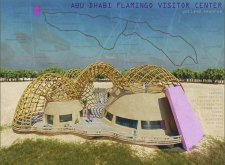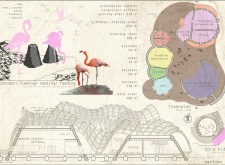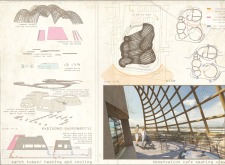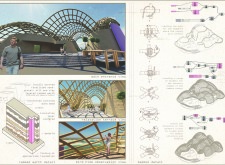5 key facts about this project
The project features a distinctive architectural design characterized by fluid geometries that evoke the natural forms found in wetlands. The building incorporates a bamboo canopy that serves both structural and aesthetic functions, ensuring the integration of the visitor center into its natural surroundings. The visitor center is constructed primarily using rammed earth, local timber, reinforced concrete, and bamboo, all chosen for their sustainability and minimal environmental impact. The facility promotes energy efficiency through the use of earth tubes for climate control, rainwater harvesting systems, and extensive use of natural light.
Innovative Design Approaches
One of the defining aspects of the Abu Dhabi Flamingo Visitor Center is its design inspiration, which is derived from the nesting and feeding behaviors of flamingos. This approach not only creates a visually appealing structure but also fosters an understanding of these species and their habitat. Observation areas are strategically integrated into the center, allowing visitors to engage with the environment and observe wildlife without disrupting their natural behaviors. The inclusion of self-guided trails and educational spaces further enhances the visitor experience, making the center a comprehensive resource for learning about local ecosystems.
Integration with the Environment
The architectural design emphasizes seamless integration with the surrounding wetland landscape. By utilizing locally sourced materials, the structure maintains a low carbon footprint while supporting regional biodiversity. The use of features such as geogrid layers contributes to the stability of the building while preserving the natural landscape. The visitor center’s layout allows for easy movement between indoor and outdoor spaces, encouraging exploration and interaction with the environment.
The Abu Dhabi Flamingo Visitor Center embodies a commitment to environmental awareness and education. Its architectural design effectively communicates the importance of conservation and provides a platform for community engagement. To gain deeper insights into the architectural plans, sections, and unique design ideas of this project, readers are encouraged to explore detailed presentations of the project.


























